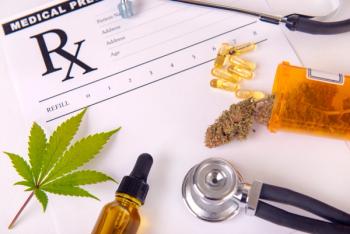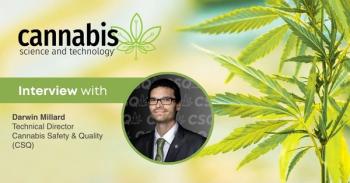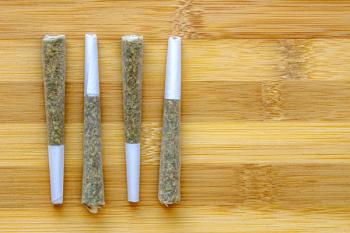
Survey Examines Patient Perspectives on Physician Cannabis Use
The survey asked about patient cannabis use, openness to discussing cannabis as part of treatment plans, and perspectives on substance use of physicians.
A recently published
In this study, 388 surveys were completed in March and April 2024, with 21 questions on the survey. The surveys were completed by upper-extremity adult patients at a medical institute in Pennsylvania, which currently allows medical cannabis use, but not recreational use. The average age of the participants was 55 years, and 58% of identified as women Survey questions were split into three sections. Section 1 included demographic information (age, gender, race, level of education, reason for visit, marital status, and employment status, cannabis use and method of ingestion). Section 2 was the Brief Marijuana Effect Expectancies Questionnaire (MEEQ-Brief). Section 3 asked questions about willingness to discuss cannabis use as part of a treatment plan, as well as comfort level of physician use of cannabis, alcohol, and nicotine.
The final question presented the statement “I am comfortable with my doctor using the following substances outside of work,” listed four substances (alcohol, nicotine, prescribed marijuana, and recreational marijuana), and participants indicated one of five answer options for each substance, which ranged from “Strongly Agree” to “Strongly Disagree” and included “Prefer Not to Answer.”
Highlighted results from the first section of the survey include:
- 96% of participants were White, 48% had at least a high school education
- 60% had never used cannabis and 11% reported frequent cannabis use
- 154 indicated some cannabis use, and among those, 33 had a medical cannabis card, and the most common ingestion method was inhalation/smoking (73.4%) followed by edibles (43%)
From the second section, results include:
- 66% of respondents agreed or strongly agree to the statement: “Marijuana helps a person relax and feel less tense (helps a person unwind and feel calm).”
- 53% agreed or strongly agreed to the statement: “Marijuana has effects on a person's body and gives people cravings (get the munchies/hungry; have a dry mouth; hard to stop laughing).”
- 35% agreed or strongly agreed to the statement: “Marijuana makes it harder to think and do things (harder to concentrate or understand; slows people down when they move).”
In the third section, results include:
- 64% agreed or strongly agreed that they were comfortable with their doctor using alcohol outside of work (13% disagreed or strongly disagreed)
- 57% agreed or strongly agreed that they were comfortable with their doctor using nicotine outside of work (16% disagreed or strongly disagreed)
- 47% agreed or strongly agreed that they were comfortable with their doctor using recreational cannabis outside of work (25% disagreed or strongly disagreed)
- 53% either agreed or strongly agreed that they were open to their physician discussing cannabis use as part of a medical treatment plan
- 40% were open to using cannabis as part of a medical treatment plan
Limitations to the study included a homogenous population in a single setting and possible influence from the state’s laws on cannabis.
The researchers concluded that in this study group, responses were highly variable, but understanding patient perspectives could help shape future policies for health systems and licensing boards. “More patients were comfortable with their physician using marijuana outside of work than not, and patients were as comfortable with their physicians using medical marijuana as they were with nicotine. Patient demographic factors and history of personal marijuana use were not associated with perceptions of potential physician marijuana use outside of work.”
Reference
- Cross, A.; Mahmoud, M.; Ozdag, Y.; Koshinski, JL.; Garcia, VC.; Dwyer, CL.; Klena, JC.; Grandizio, LC. Perceptions of Patient and Surgeon Marijuana Use: A Survey Study of Upper-Extremity Patients. Journal of Hand Surgery Global Online. 2024. DOI:
10.1016/j.jhsg.2024.11.010 .
Newsletter
Unlock the latest breakthroughs in cannabis science—subscribe now to get expert insights, research, and industry updates delivered to your inbox.





